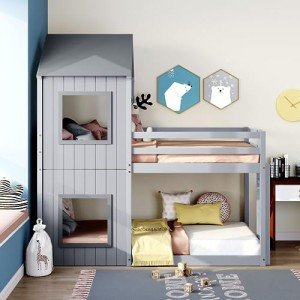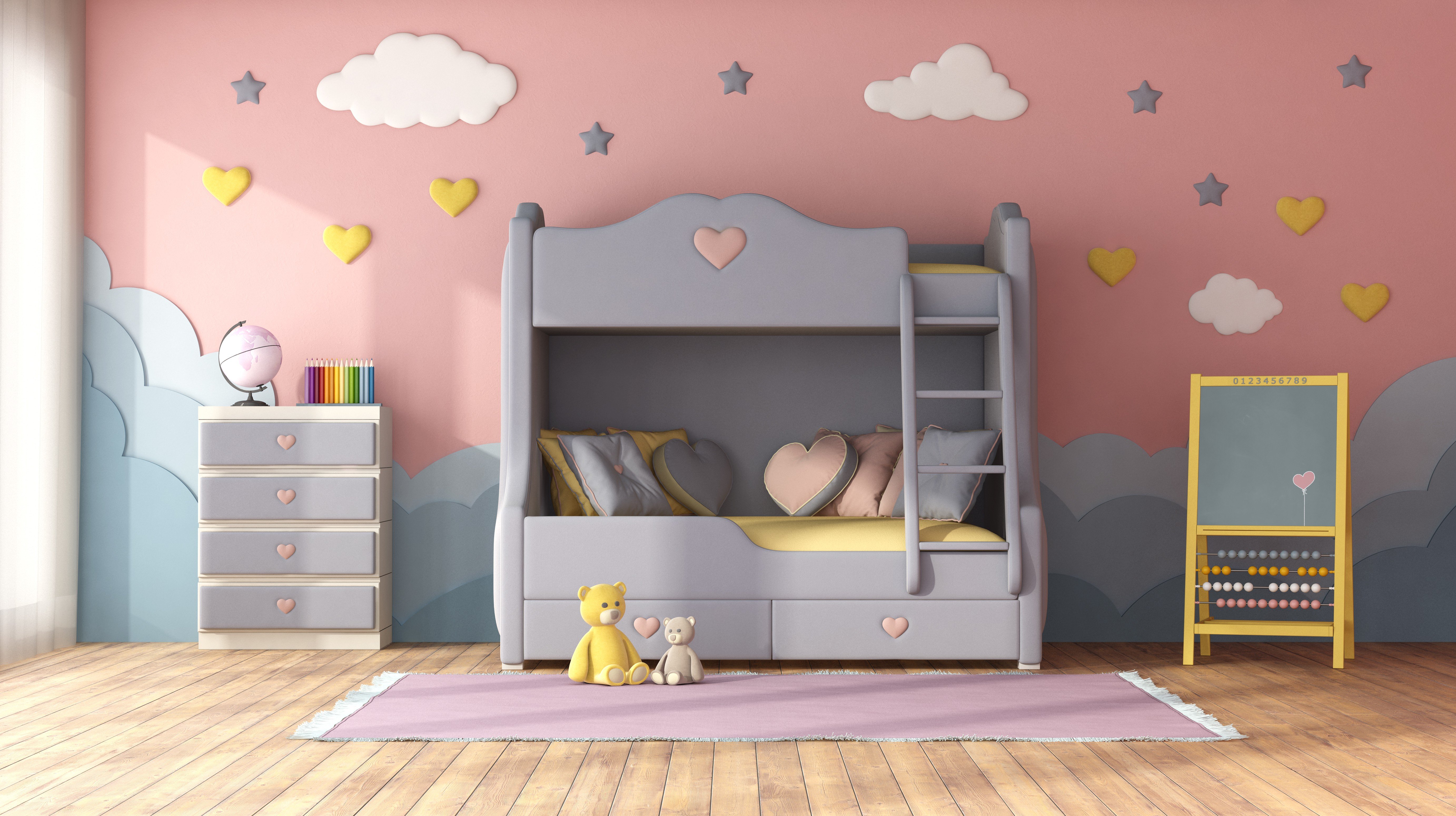
The Ultimate Guide to Kids Bunk Beds: Maximizing Space and Fun
With the rise of vertical living and smaller spaces, the appeal of bunk beds has actually skyrocketed amongst households. Bunk beds not just use a practical sleeping option, particularly in shared rooms, however they also bring an aspect of fun into a kid's life. This detailed guide looks into the functions, advantages, and factors to consider of kids' bunk beds, making it simpler for parents to pick the ideal bed for their little ones.
Features of Kids Bunk Beds
Bunk beds are versatile furniture pieces that serve more than a single function. Here are some essential functions to consider:
| Feature | Description |
|---|---|
| Product | Bunk beds can be built from wood, metal, or a mix of both, using varying levels of sturdiness and style choices. |
| Safety Features | Many bunk beds come geared up with guardrails, protected ladders, and topped supports for safety, especially important for young kids. |
| Style Variety | Choices range from classic styles to modern designs, making sure a match for any room décor. |
| Space-Efficiency | Bunk beds utilize vertical space, making them perfect for smaller sized spaces. |
| Convertible Options | Some models can be converted into 2 separate beds, providing versatility as children grow. |
| Storage Solutions | Some bunk beds feature integrated storage drawers or shelves, assisting to keep the space arranged. |
Advantages of Kids Bunk Beds
Purchasing a bunk bed features numerous advantages:
- Space Saving: Bunk beds make the most of floor space, enabling more backyard or storage options.
- Enjoyable Factor: With a bunk bed, kids have a place that fosters imagination and companionship during pajama parties or playdates.
- Cost-Effective: Instead of buying 2 different beds, a bunk bed can accommodate two kids simultaneously, saving cash in the long run.
- Flexibility: Many bunk beds can be taken apart or transformed into twin beds, making them a long-term investment as kids bunk Bed's requirements change.
- Social Interaction: Bunk beds motivate household bonding and relationships, supplying an inviting space for children to share stories and laughter.
Factors to consider When Choosing a Kids Bunk Bed
When selecting the ideal bunk bed for a kid, parents should take into account various elements:
- Safety Standards: Ensure that the bunk bed adhere to safety guidelines and features important security functions.
- Age Appropriateness: Different models cater to different age. For example, standard bunk beds may not appropriate for more youthful children.
- Space Dimensions: Measure the bedroom to ensure the bunk bed fits appropriately, allowing for space to walk around comfortably.
- Weight Capacity: Consider the weight load of each bed and ensure it accommodates the kid's weight comfortably.
- Style Preferences: Letting children get involved in the selection process can help them feel more thrilled about their new bed.
Types of Kids Bunk Beds
Bunk beds come in various styles and setups to fit different needs:
| Type | Description |
|---|---|
| Standard Bunk Bed | A timeless style with one bed stacked on top of another, normally utilizing a ladder to access the leading bunk. |
| L-Shaped Bunk Bed | Features two bunk beds linked in an L-shape, frequently more spacious and suitable for kids sharing a space however needing a bit more space. |
| Triple Bunk Bed | Comprises 3 stacked beds, suitable for optimizing sleeping plans in extremely restricted spaces. |
| Loft Bed | A raised bed with space below that can serve as a backyard, study corner, or additional storage. |
| Futon Bunk Bed | Integrates a bunk bed on the top with a futon or couch beneath, making it great for sleepovers and optimizing room use. |
| Convertible Bunk Bed | Can be separated into two private beds, offering versatility as kids's needs alter. |
Taking Care Of Kids Bunk Beds
Keeping bunk beds is crucial for guaranteeing longevity and security. Here are some easy care practices:
- Regular Inspections: Check the bed regularly for loose screws and tightened up bolts to guarantee stability.
- Tidiness: Keep bedding clean and fresh, turning mattresses for even use.
- Guardrails: Ensure guardrails are protected and in location, especially if children tend to walk around a lot in their sleep.
- Air Circulation: Ensure the bed has enough airflow, avoiding wetness accumulation that can lead to mold or mildew.
FAQs About Kids Bunk Beds
Q1: At what age can a kid safely use a bunk bed?
A1: Generally, kids aged six and older are considered safe to utilize the upper bunk due to the height and stability elements involved.
Q2: Can I position a bunk bed near a window?
A2: It is advisable to prevent positioning a bunk bed near windows to lower the threat of falling or injuries.
Q3: Are bunk beds safe for more youthful children?
A3: While some modern-day bunk beds come with security features accommodating younger children, it is generally recommended to wait until they are older, typically over six years.
Q4: What is the normal weight limit for leading bunks?
A4: Weight limits differ by model however generally vary from 150 to 250 pounds. Constantly describe the manufacturer's specifications.
Q5: How typically should I examine the bunk bed's security functions?

A5: It is a good idea to conduct a safety check every couple of months or whenever you discover any signs of wear.
Kids' bunk beds function as a tactical option for families looking to make the most of space while supplying an enjoyable and appealing sleeping environment for their children. With a variety of options available-- from standard styles to loft beds-- moms and dads have the liberty to select something that meets their family's particular needs. By considering crucial aspects such as security, space suitability, and their children's choices, moms and dads can make an informed option, making sure that each child is thrilled about bedtime while benefiting from an efficient room.







